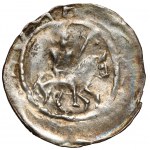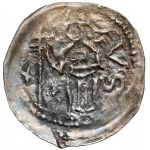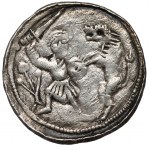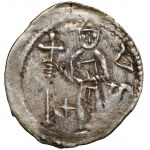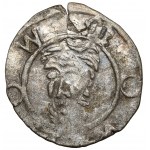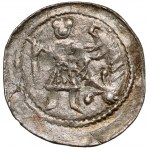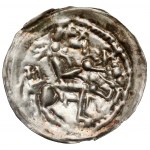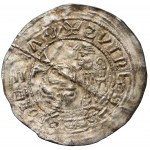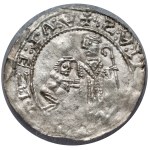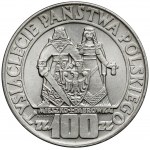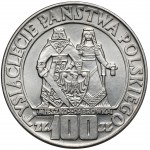Here is a bracteate absent from the largest Polish museum collections (in Cracow, Warsaw, Poznan). Class of the famous brakteates of the period of the district split, such as the walking Angel, Siren or Centaur. But unlike them, so far it has never appeared at auction.
Genesis of the issue: the period of the district split is one of the most fascinating sections of Polish minting. It has been calledthe "dark age" of medieval numismatics because so many of its pages still await discovery. As Witold Garbaczewski mentions in"Iconography of Piast Coins," Mieszko III's minting begins a new chapter of Polish money. He not only introduces into circulation in place of bilateral denarii - one-sided brakteates, but also intensifies the system of periodic exchange of coins. The consequence is a sharp increase in the number of their types. This is well reflected in the fact that the reign of Mieszko, although short, is only slightly inferior in number of types to all earlier denarius issues of the Piast princes! In turn, frequent exchange and the need to clearly distinguish successive issues resulted in many original stamp motifs.
Iconography: although this brakteat refers to the well-known motif of the "fight with the lion" (a symbol of the clash between good and evil) from Piast minting, its representation is unique. Both on the denarii of the Exile with this scene, later issues of his sons or the brakteate with the inscription"in Mieszko's salvation" (Kopicki 136), the figure of the knight (prince) is always ready to fight and raises his sword. Here, on the other hand, despite the climbed lion preparing to attack, he is in a dignified representative pose, with his sword resting on his shoulder. A pose that emphasizes the courage and majesty of the prince. An important element of the stamp here is also the centrally placed cross, which, together with the stars, should be considered Christological symbols.
Preliminary attribution: this is a brakteat maintained in the style characteristic of Mieszko III. This can be seen, among other things, in the way the knight's face or his hair are executed on the stamp. According to Witold Garbaczewski, however, it may not necessarily be his issue. The lack of an inscription on the coin would suggest that it is a later issue. According to his preliminary analysis, it is likely to be of Greater Poland (Inowrocław or the borderland between Greater Poland and Silesia is also possible), from the turn of the 12th and 13th centuries. However, the exact attribution requires further in-depth research.
Summary: This is a unique coin. Not described in the literature. One of those that can be compared to comets circling in the sky. Often we do not even know of their existence, but once they appear in sight, they focus the attention of many. However, few have a chance to see such coins, and those who are then late are left with only a sense of missed opportunity.







